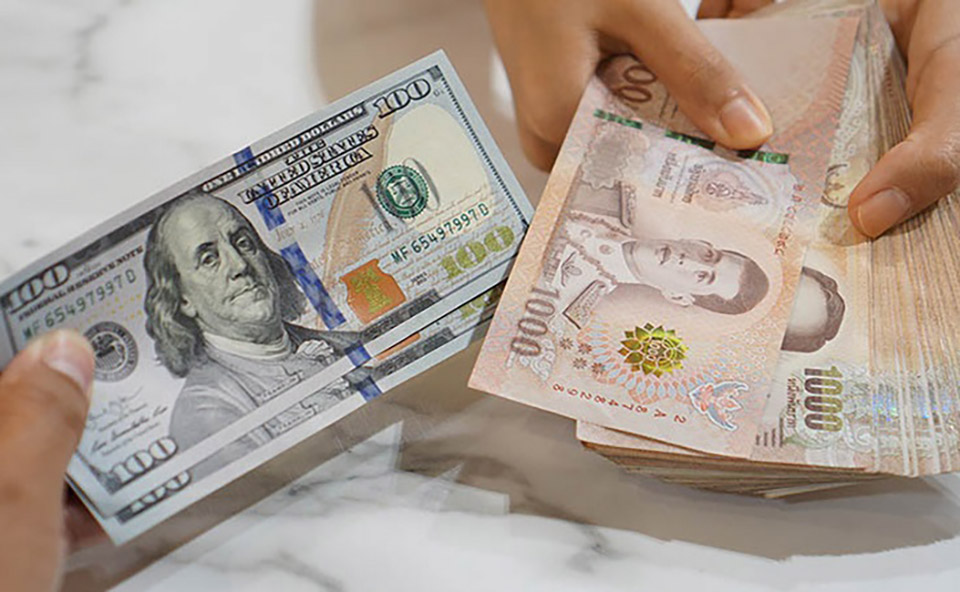
BANGKOK, Thailand – The morning of Sept 2 at 9:35 AM, the Thai Baht was trading at approximately 34.13-34.15 Baht per US dollar, down from its close last week at 33.86 Baht per dollar.
Ms. Kanjana Chokpaisansin, Research Executive at Kasikorn Research Center, explained that the Baht has weakened after reaching its strongest level in 13 months at 33.85 Baht per dollar on August 30. This depreciation aligns with the broader trend seen in several Asian currencies and is influenced by the global decline in gold prices.
Concurrently, the US dollar has strengthened, driven by rising US bond yields amid expectations that the Federal Reserve (Fed) may reduce interest rates by only 0.25% during the September FOMC meeting. This comes after the US inflation data, measured by the PCE/Core PCE Price Index for July, met market expectations (US PCE Price Inflation at +2.5% YoY in July, slightly below the expected +2.6% YoY, and stable from +2.5% YoY in June; Core PCE Price Inflation at +2.6% YoY in July, slightly below the expected +2.7% YoY, and stable from +2.6% YoY in June).
Additionally, the Japanese Yen and Chinese Yuan did not see significant support, despite better-than-expected August manufacturing PMI data.
A currency trader from Krungsri Bank noted that the Baht’s movement follows global market trends, as the dollar strengthened against major currencies after the PCE inflation figures met market expectations, leading to resurgence in dollar buying. Furthermore, the Baht faced additional pressure from foreign capital outflows and gold imports late Friday night, following a $32 per ounce drop in gold prices. (TNA)







